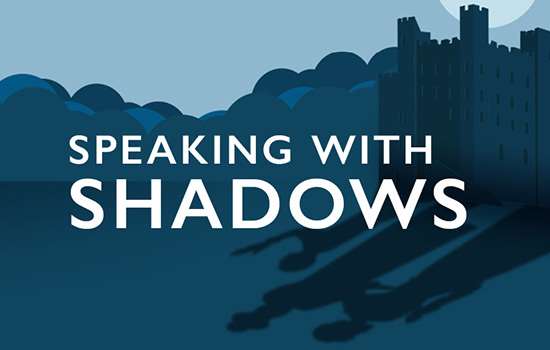Listen
For this episode Josie travels to Battle Abbey, site of the Battle of Hastings. With English Heritage curator Kathryn Bedford and Gwen Lally’s biographer, Deborah Sugg Ryan, she explores the story of the Battle Pageant and the life of its unconventional pageant master. Josie also meets E-J Scott, Curator of the Museum of Transology, and Francesca Reid (aka drag king Brent Would), to discuss how gender roles have been challenged through performance.
Listen to this episode below, and subscribe to Speaking with Shadows on your favourite podcast platform.
Image Gallery
Gwen Lally
Born in 1882, Gwen Lally began her career as an actress, and was renowned for playing only male parts – she later wrote that she was the only actress never to have worn a skirt on stage. She began producing historical pageants in the 1920s, and was said to have the manner of a sergeant-major, directing the action through a megaphone from an elevated crow’s nest.
Off stage, Lally was much remarked on for her androgynous appearance and masculine clothes. And although she left no known record of her private life, recent research suggests that she may have had a long relationship with another woman.
Read more about Gwen LallyExperiments in Gender: Women and Masculine Dress
In the early 20th century women such as Vita Sackville-West, Gwen Lally and Radclyffe Hall adopted masculine styles of dress that were subversive, exploratory and playful. Historian Alison Oram explores how such clothing choices might have expressed increasingly fluid ideas about gender identity and sexuality, as well as sometimes simply being about fashion or practicality.
Read More about masculine dressFurther reading
- Bartie, A, et al., ‘Battle Abbey Pageant’, The Redress of the Past (accessed 5 Sept 2019)
- Ryan, DS, ‘Lally, Gwen [real name Gwendolin Rosalie Lally Tollandal Speck] (1882–1963)’, Oxford Dictionary of National Biography, 2014 (subscription needed; accessed 5 Sept 2019)
- King’s College London, ‘Gwen Lally’ (accessed 2 Oct 2019)
Episode Credits
Presenter: Josie Long
Producer: Katharine Kerr for Fresh Air
Contributors:
- Kathryn Bedford, English Heritage Collections Curator (South East)
- Deborah Sugg Ryan, Professor of Design History and Theory at University of Portsmouth
- E-J Scott, Historian, Curator and Queer Cultural Producer
- Francesca Reid, performer and creator of the Drag King, Brent Would
Top image: Gwen Lally directing a pageant (King's College London Archives K/PP251/2/8)
Explore more
-

Listen to more Speaking with Shadows
Explore more episodes of Speaking with Shadows, the podcast that listens to the people that history forgot.
-

Women in history
Read about the remarkable lives of some of the women who have left their mark on society and shaped our way of life – from Anglo-Saxon times to the 20th century.
-

LGBTQ History
LGBTQ history has often been hidden from view. Find out more about the lives of some LGBTQ individuals and their place in the stories of English Heritage sites.
-

The English Heritage Podcast
Our weekly podcast brings you entertaining tales from unexpected places. We begin with a mystery item and, with the help of experts and special guests, we explore what our past can tell us about our present and perhaps our future.
-

Visit Battle Abbey
Relive the battle that changed England forever.
-

What happened at the Battle of Hastings?
At dawn on 14 October 1066, two great armies prepared to fight for the throne of England. Read what happened at the most famous battle in English history.
-

History of Battle Abbey
Read an in-depth history of the abbey founded by William the Conqueror after the Battle of Hastings, from its foundation to its suppression and after.










